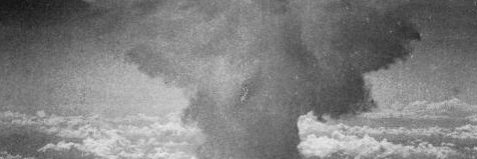“Crop declines would be the most severe in the mid-high latitude nations, including major exporting countries such as Russia and the U.S., which could trigger export restrictions and cause severe disruptions in import-dependent countries in Africa and the Middle East,” said Rutgers University. Source: Wikimedia Commons.
Rutgers University has suggested that a nuclear war between the US and Russia would significantly affect global crop production and send billions of people hungry.
Climate scientists from around the world have researched the effects of several scenarios-ranging from small to full-scale nuclear wars- on crop production post nuclear fallout.
They worked on calculating how much sun-blocking soot would make its way into the Earth’s atmosphere following detonation.
Results from this were entered into a system called the Community Earth System Model which determined how the harvest of several crops (maize, rice, spring wheat and soybean) would be affected in each country.
According to Rutgers there would be a seven per cent decline in the global average caloric production within five years after conflict between India and Pakistan, but this number would increase to 90 per cent in a nuclear war between the US and Russia.
It’s estimated 90 per cent of the world’s nuclear stock lie within the US and Russia with about 15,000 nuclear warheads around the globe.

There have been several almost nuclear wars since the 60s but most notably the Cuban Missile Crisis in 1962 is considered to be the closest.
Professor of climate science and lead author Alan Robock said that steps need to be taken to “prevent a nuclear war from ever happening”.
“If nuclear weapons exist, they can be used, and the world has come close to nuclear war several times,” he said.
“Banning nuclear weapons is the only long-term solution.
“The five-year-old UN Treaty on the Prohibition of Nuclear Weapons has been ratified by 66 nations, but none of the nine nuclear states. Our work makes clear that it is time for those nine states to listen to science and the rest of the world and sign this treaty.”
75 per cent of Earth’s population would be starving within two years of fighting according to research assistant Lili Xia who said researchers even looked at food meant for livestock consumption to be given to humans.
“Future work will bring even more granularity to the crop models,” Xia said.
“For instance, the ozone layer would be destroyed by the heating of the stratosphere, producing more ultraviolet radiation at the surface, and we need to understand that impact on food supplies.”





